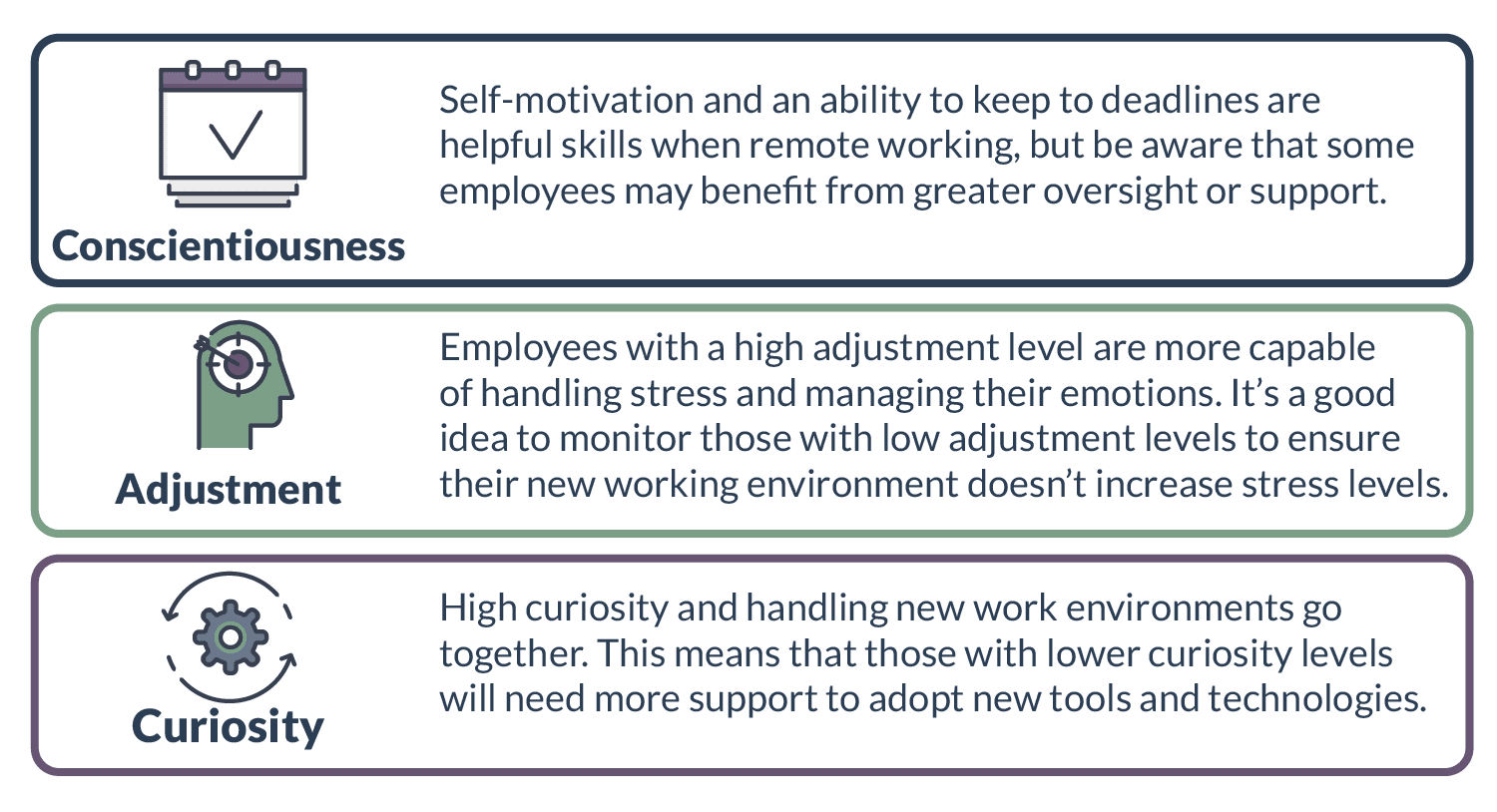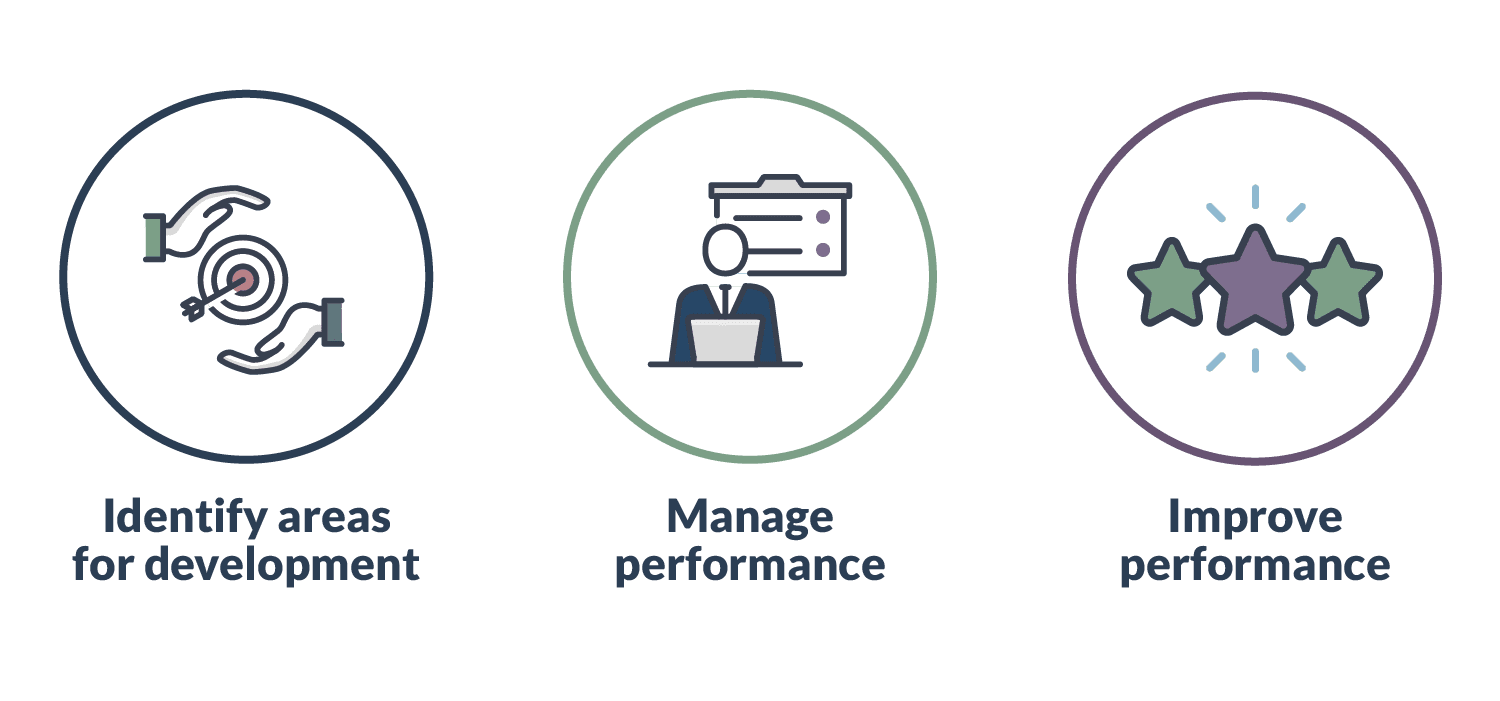Not everyone is a natural remote worker. To give your employees great performance management out of the office, you need to understand their personality style.
It’s no secret that the number of remote workers is on the rise due to better technology, globalisation, and changing workplace culture.
Add to this the recent changes to global health guidelines, it’s safe to say the number of remote workers is likely to accelerate even further.
But with the scale of remote working we’ll likely see in the coming weeks and months, it’s never been more important to consider the impact it can have on your employees’ performance, development and wellbeing.
Good remote performance management is essential, not only to help your people achieve their best work, but also to ensure they don’t feel isolated. That’s why it’s critical to make sure existing business processes and support are tailored to the individual.
This includes:
Here, we’ll look at three key process considerations you need to have in place when employees work from home.
1. Ensure your processes are fit-for-purpose
Remote workers can be more productive then their traditional office-based colleagues, and even experience higher job satisfaction due to factors such as lower stress and commuting.
Ian MacRae, test author of the High Potential Trait Indicator and Head of Workplace Psychology at Clear Review, conducted personality research of remote workers which suggests that remote workers need more stimulation and greater challenges than average office-based workers. But, with the lack of formal face-to-face meetings, they’re also less likely to ask for feedback or demand recognition.
That’s why transferring good performance processes to remote working is essential to help your business function as usual – and your employees continue to feel supported and valued.
Being transparent about how you intend to evaluate remote employee performance can help to provide a smooth transition between the office and home.
And by continuing regular communication and performance feedback, you can help your people feel that processes are being appropriately managed, and help keep them fully engaged in your day-to-day operations.
2. Account for individual personality traits
Unlike working in a traditional office environment, remote working requires a higher degree of self-motivation and time-management. And while the majority of people work well remotely, it’s not always ideal for everyone.
Thomas’ High Potential Trait Indicator (HPTI) is an assessment which measures six key traits that indicate personality and affect work performance. Personality is a stable psychological concept that affects our thoughts, behaviours and emotions. The six key traits measured by the HPTI are conscientiousness, adjustment, curiosity, risk approach, ambiguity acceptance and competitiveness.
The three important personality traits that will influence how your employees handle remote working are:
None of these traits are necessarily negative, but they’re essential to keep in mind when managing remote worker performance.
3. Create remote performance management routines
With limited physical communication, it can be a challenge to maintain the same performance and development management outside the office.
Good performance management is critical to maintain office-based expectations and deliverables while your employees are working remotely.
But performance management should always be tailored to the individual. According to research conducted by Ian MacRae, there’s a balanced split between the number of average employees who prefer quarterly, monthly, and weekly feedback.
It’s also important to consider how you provide feedback. Whether it’s written – such as email and instant messaging – or via video calling, these seemingly minor considerations can have a significant impact on employee and business outcomes.
Thomas’ Personal Profile Analysis (PPA) behavioural assessment can help you to identify what your employees preferred communication style is and how you can modify your own communication and management style to accommodate that and make communication more effective overall.
In just 8 minutes, the assessment can help you:
Remote working: going from theory to reality
Remote working is no longer considered a nice perk for select employees. The truth is, the number of remote workers around the world is only set to rise – and that’s not even considering recent changes to public health guidelines.
And while there are clear advantages to working from home – such as greater productivity, engagement, satisfaction, and independence – remote working also needs careful management to ensure your employees don’t become disengaged or demotivated. Don’t assume that every employee has the same potential to excel in a remote working environment.
One of the best ways to keep your workforce flexible, healthy, effective, and productive while remote working is by using tools and resources like psychometric tests and assessments, which can help you to identify high potential at work.
Written by Thomas International



